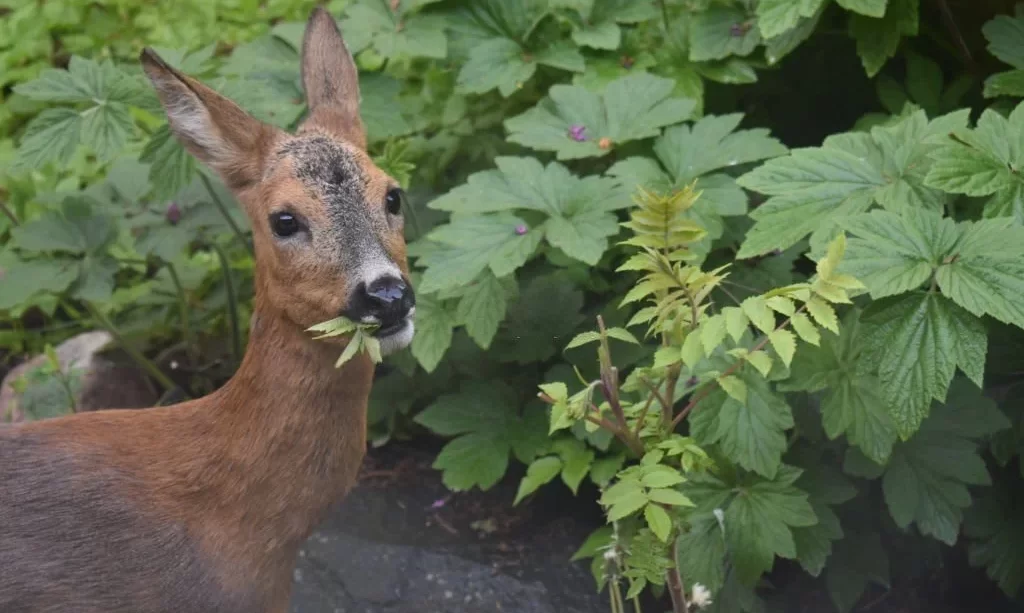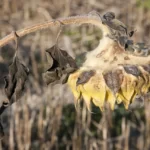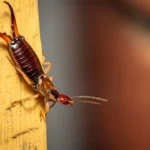Deer, with their graceful presence and peaceful demeanor, often inhabit our natural landscapes and gardens. However, their interactions with garden plants raise questions among gardeners and nature enthusiasts, particularly when it comes to the captivating wisteria vine. In this article, we embark on a journey to unravel the dietary preferences of deer and explore whether wisteria, renowned for its cascading clusters of exquisite flowers, is a part of their menu.
Deer Dietary Habits
To comprehend the likelihood of deer consuming wisteria, it is essential to delve into the dietary habits of these magnificent herbivores. Deer are, by nature, strict herbivores, meaning their diet revolves exclusively around plant-based foods. Their culinary repertoire consists of various vegetation, including leaves, grasses, twigs, shoots, and fruits. Unlike omnivores or carnivores, deer have evolved to thrive on cellulose, a complex carbohydrate found in the cell walls of plants.
Deer boast a highly specialized digestive system designed to efficiently extract nutrition from plant material. Their stomachs have four compartments, facilitating a thorough breakdown of fibrous plant matter. This adaptation enables deer to make the most of plant nutrients, making them well-suited for a herbivorous diet.
In their natural habitats and within the garden realm, deer are renowned for their foraging skills. They are known to selectively browse on different plant species, often choosing plants based on factors like seasonality, plant availability, and nutritional content. To ascertain whether wisteria is a favored component of their diet or merely an occasional curiosity, we must delve further into the dietary inclinations of these gentle browsers.
Wisteria Overview
Before we explore the potential appeal of wisteria to deer, let’s acquaint ourselves with this enchanting plant. Wisteria, a member of the Fabaceae family, is a woody vine celebrated for its stunning aesthetics and ornamental value. It boasts cascading clusters of flowers that drape gracefully from arbors, trellises, and garden structures.
Wisteria species vary, with the most common being Chinese wisteria (Wisteria sinensis) and Japanese wisteria (Wisteria floribunda). Both types captivate garden enthusiasts with their picturesque blossoms, which range in color from pristine white and soft lilac to vibrant shades of purple and blue.
Beyond its visual allure, wisteria has cultural significance and historical roots in various parts of the world. It is cherished for its elegant, pendulous blooms that herald the arrival of spring. Its fragrant blossoms attract pollinators such as bees and butterflies, further enhancing its appeal in gardens.
As we embark on our exploration of the relationship between deer and wisteria, we shall consider the captivating allure of this vine and whether it entices the palates of our herbivorous friends or remains an exquisite but untouched gem in our gardens.
- For sale is one Purple Chinese Wisteria that is 6-12″ tall shipped in a 2.5″ pot
- Hardiness Zones: 4-9
- Please note: If you order during the months from October-April, your plant will arrive in its natural dormant state, meaning it will not have any leaves
- Year-Round Interest: Offers rich green foliage throughout the growing season, while bare winter branches add architectural interest
- Vibrant Blooms: Produces stunning clusters of purple-blue flowers that drape down elegantly from the tree
Do Deer Eat Wisteria?
The central question that often piques the curiosity of gardeners and nature enthusiasts is whether deer include wisteria in their diet. While wisteria is renowned for its visual splendor and fragrant blossoms, it is not typically a preferred food source for deer. These herbivores tend to prioritize more readily available and nutritionally rich vegetation.
Deer may occasionally browse on wisteria, but such instances are usually infrequent. It’s important to recognize that deer have specific taste preferences, favoring tender leaves, shoots, and grasses over woody vines like wisteria. The presence of more enticing food sources in their surroundings often outweighs any interest they may have in nibbling on ornamental plants.
Factors Influencing Deer-Wisteria Interactions
Several factors can influence the dynamics of deer-wisteria interactions:
- Food Availability: The availability of natural forage plays a significant role. In areas with abundant natural vegetation, deer are less likely to explore ornamental plants like wisteria.
- Seasonality: Seasonal variations in food availability can impact deer behavior. During periods of lush vegetation growth, deer are less inclined to explore alternative food sources like wisteria.
- Deer Population Density: In areas with high deer population density, there may be more frequent instances of deer exploring a wider range of plant species, including ornamental vines like wisteria.
- Individual Preferences: Just as humans have individual food preferences, deer may also exhibit varying preferences for certain plants. Some deer may nibble on wisteria out of curiosity or due to unique taste preferences, while others may entirely overlook it.
In essence, while wisteria may occasionally catch the attention of deer, it is not a primary component of their diet. Factors such as food availability, seasonality, and individual preferences collectively influence whether deer choose to browse on wisteria vines. Gardeners who wish to preserve their wisteria can take proactive measures to protect their plants from deer damage, as explored in the following sections of this article.
Protecting Wisteria from Deer Damage
For gardeners and enthusiasts who cherish their wisteria and wish to safeguard it from potential deer nibbling, several strategies can be employed:
- Fencing: Installing deer-resistant fencing around the garden or specific wisteria plants can create a protective barrier that deters deer from accessing the vines.
- Repellents: The use of deer repellents, which are available in various forms, including sprays and scent deterrents, can be an effective means of discouraging deer from approaching wisteria.
- Plant Diversity: Incorporating a variety of deer-resistant plants in your garden can divert the attention of deer away from wisteria. Deer-resistant species may include plants with strong scents, unpalatable textures, or thorny foliage.
- Pruning and Maintenance: Regularly prune and maintain wisteria to remove lower leaves and branches that deer may find accessible. Elevated growth can discourage browsing.
- Alternative Food Sources: Providing deer with alternative food sources in a designated area away from prized wisteria can help redirect their foraging tendencies.
- Tough durable deer netting; Protects landscape and crops from deer and other animals
- Economical, lightweight deer protection; Black UV-resistant deer netting
- Reusable mesh deer fence; Stops deer and other animals from eating shrubs, berries, and vegetables
- Easy to use roll of deer fence netting; Attaches easily to posts and trees
- Do it yourself deer netting for protecting trees, shrubs, orchards and crops
Conclusion
In conclusion, the enchanting wisteria vine, celebrated for its cascading blossoms and ornamental value, is not a common dietary choice for deer. While deer may occasionally nibble on wisteria leaves or blossoms, these interactions are typically infrequent. Deer, as herbivores, prioritize other more readily available and nutritionally rich vegetation in their diet.
Understanding the dynamics of deer-wisteria interactions and the factors influencing these encounters is valuable for gardeners and homeowners who wish to protect their wisteria plants. Implementing protective measures such as fencing, repellents, and diversifying the garden with deer-resistant plants can help preserve the beauty of wisteria while allowing these graceful herbivores to peacefully coexist in our natural and cultivated landscapes.
So, as you admire the elegant wisteria blooms adorning your garden, you can appreciate them not only for their aesthetic appeal but also for the gentle harmony they share with the wildlife that graces our outdoor spaces.






